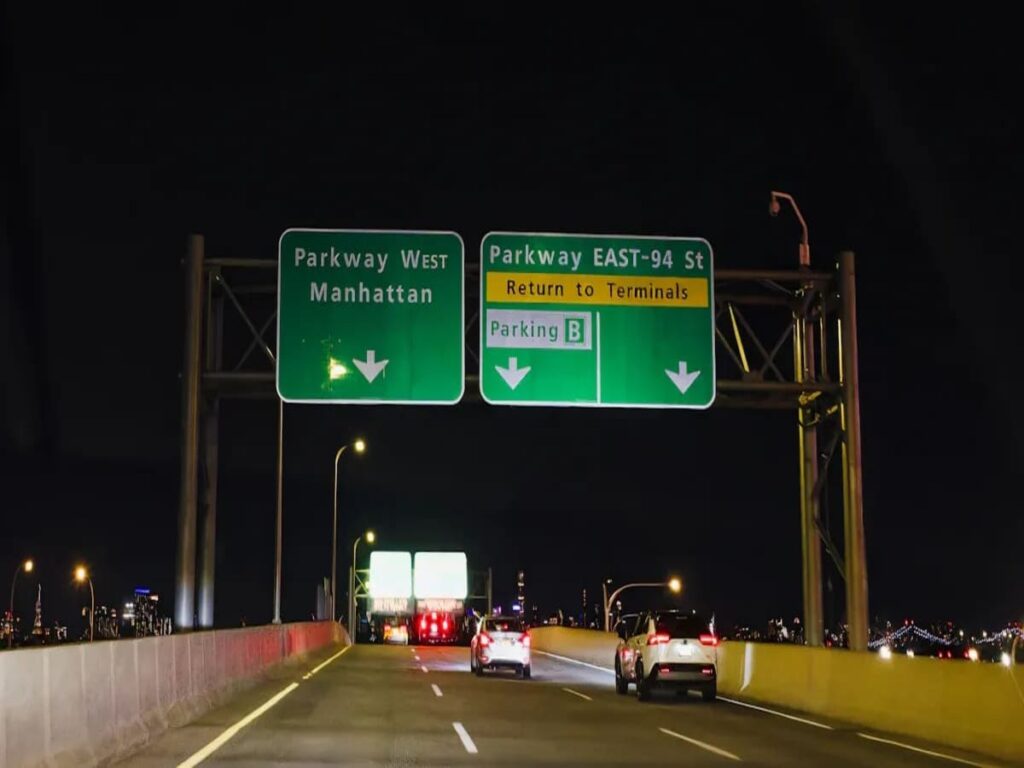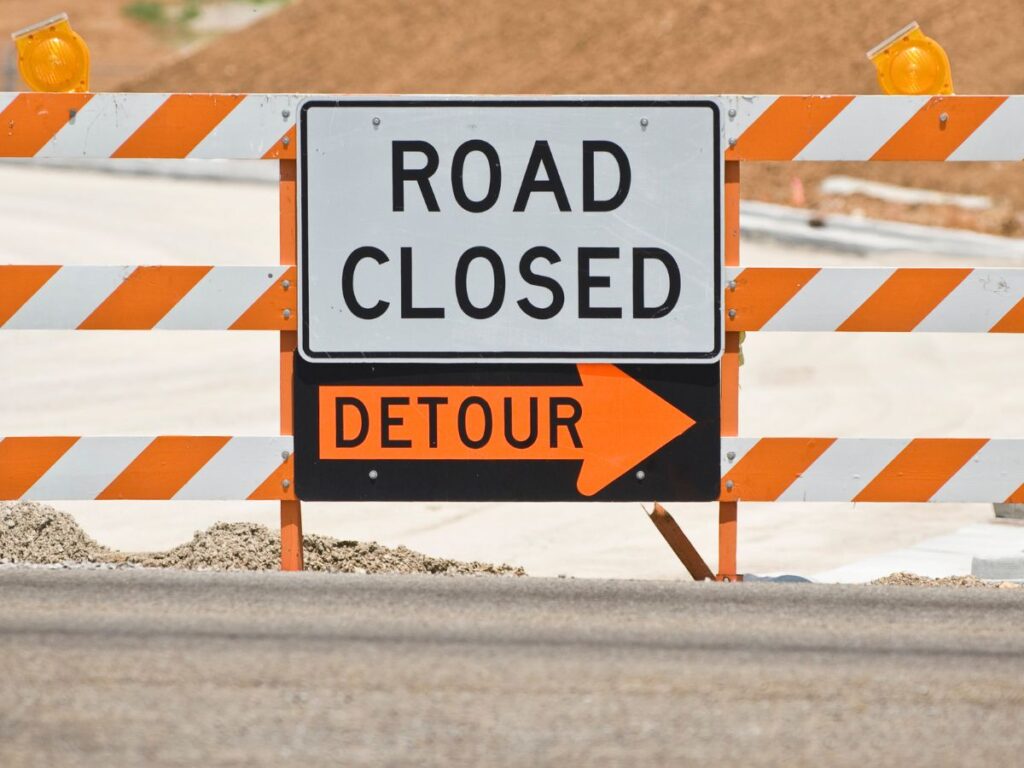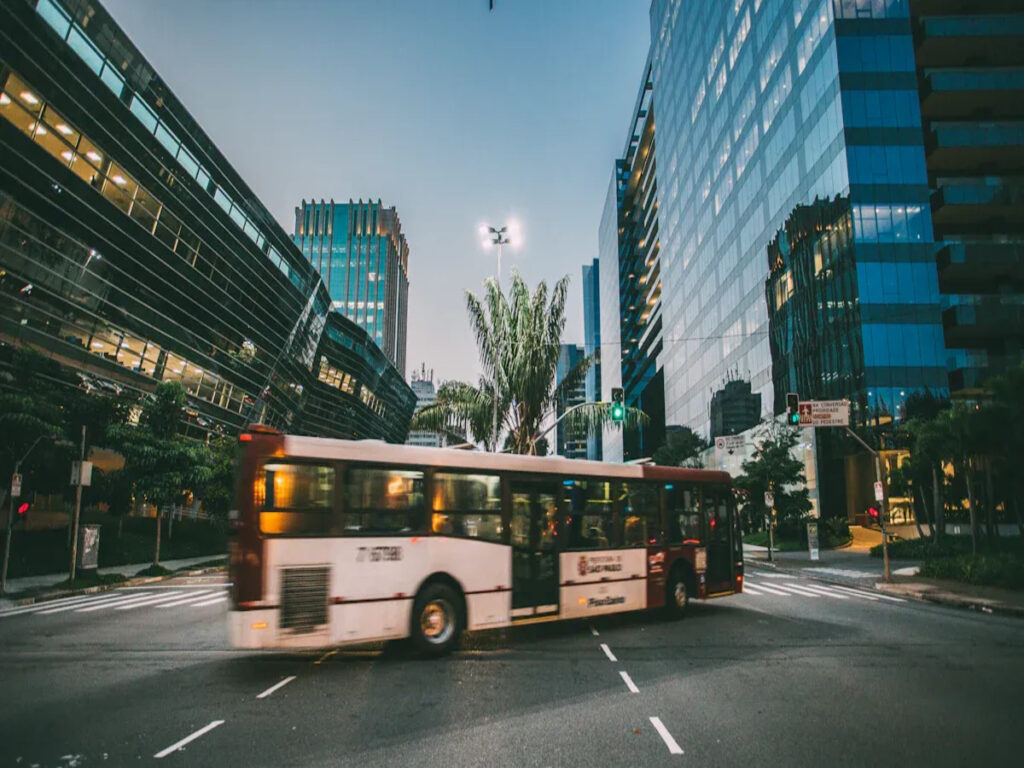
النقل المتعدد الوسائط يتضمن دراجات, المشي, حافلات, والسيارات الكهربائية, المساهمة في انخفاض حركة المرور والتلوث مع تعزيز راحة السفر. على سبيل المثال, حقق Metroville أ 30% انخفاض في تلوث وسط المدينة من خلال تنفيذ المناطق الخضراء وتحسين خدمات الحافلات. زيادة استخدام الحافلة بواسطة 5% وإدخال الدراجات الإلكترونية يمكن أن يقلل من حركة المرور وتوفير الوقت. من خلال التخطيط الاستراتيجي على الطرق وتقليل استخدام السيارة, يمكن للمدن تعزيز السلامة المرورية وتصبح أكثر خضرة, بدعم من منتجات السلامة المرورية الفعالة.
الوجبات الرئيسية
- يستخدم النقل متعدد الوسائط طرقًا مختلفة للسفر, مثل ركوب الدراجات, المشي, والحافلات, لخفض حركة المرور والتلوث.
- يمكن للمدن تحسين السفر من خلال ربط هذه الطرق, مما يجعل من السهل التبديل بينهما.
- تساعد إضافة ممرات للدراجات ومسارات للمشي الأشخاص على الحفاظ على صحتهم والشعور بالتحسن في مجتمعاتهم.
- الأدوات الذكية, مثل الذكاء الاصطناعي والبيانات الحية, المساعدة في التحكم في حركة المرور وجعل هذه الأنظمة تعمل بشكل أفضل.
- يمكن للسياسات وتعليم الناس حول السفر متعدد الوسائط أن يخلق نظافة, أكثر أمانًا, والمدن الأسهل استخدامًا.
فهم النقل متعدد الوسائط
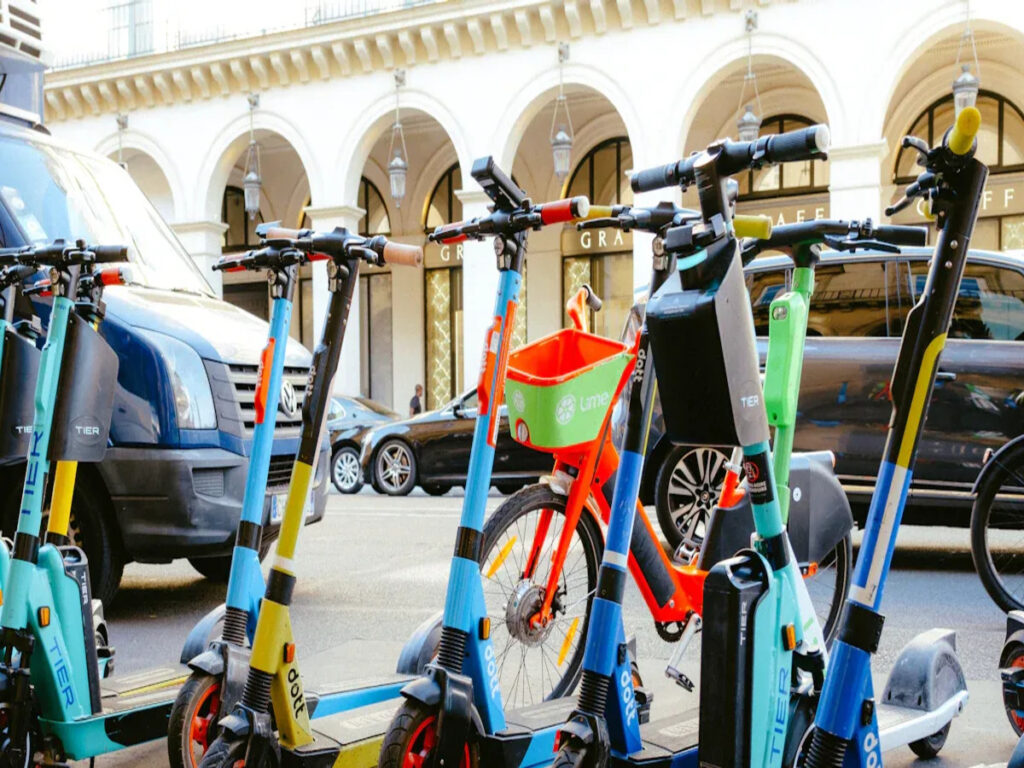
ما هو النقل المتعدد الوسائط?
النقل متعدد الوسائط يعني استخدام طرق مختلفة للسفر. وتشمل هذه المشي, ركوب الدراجات, حافلات, والسيارات الكهربائية. يمكنك الجمع بين هذه الطرق في رحلة واحدة. على سبيل المثال, قد تذهب بالدراجة إلى محطة الحافلات, ركوب الحافلة, والمشي إلى وجهتك. يساعدك هذا النظام على اختيار الخيار الأفضل لكل جزء من رحلتك.
تخطط المدن لشبكات لربط طرق السفر هذه. يعمل كل وضع معًا لتقليل استخدام السيارة. قامت مدن مثل فانكوفر وأمستردام بإنشاء أنظمة تجعل التبديل بين الأوضاع أمرًا سهلاً. توفر هذه الأنظمة الوقت وتقلل التلوث, جعل المدن أكثر نظافة وأقل ازدحاما.
أهمية النقل متعدد الوسائط في التخطيط الحضري
يساعد التخطيط الحضري على إنشاء أنظمة نقل متعددة الوسائط. تواجه المدن المتنامية مشاكل مثل الاختناقات المرورية والتلوث. ويحل التخطيط متعدد الوسائط هذه المشكلات من خلال التركيز على النقل العام والسفر الصديق للبيئة.
حافلات النقل السريع في بوغوتا (حافلات النقل السريع) نظام يوضح كيف يعمل هذا. لقد أدى ذلك إلى تقصير التنقلات وتحسين الوصول إلى الوظائف للعديد من الأشخاص. ارتفعت قيم العقارات, تعزيز الاقتصاد. إن إضافة وسائل النقل المتعددة الوسائط إلى خطط المدن يجعل السفر أسهل ويقلل التلوث.
يضيف المخططون أيضًا خدمات جديدة مثل مشاركة الرحلات والدراجات البخارية الإلكترونية إلى الأنظمة الحالية. تساعد هذه الخيارات الأشخاص على استخدام عدد أقل من السيارات والمزيد من وسائل النقل المشتركة. يتيح برنامج محفظة النقل في بورتلاند للمجتمعات المحرومة إمكانية الوصول بشكل أفضل إلى السفر متعدد الوسائط, مما يجعلها أكثر عدالة للجميع.
كيف يعزز السفر متعدد الوسائط النقل المستدام
يساعد السفر متعدد الوسائط البيئة عن طريق خفض الانبعاثات. المشي, ركوب الدراجات, أو استخدام الحافلات بدلاً من السيارات يحسن جودة الهواء. يمكن أن يؤدي استخدام خيارات مثل الدراجات البخارية الإلكترونية ومشاركة الدراجات إلى تقليل السفر بالسيارة 10%.
تستخدم المدن أيضًا الحافلات والقطارات الخالية من الانبعاثات لتصبح صديقة للبيئة. تساعد الحافلات الكهربائية وغيرها من الخيارات الصديقة للبيئة المدن على أن تصبح مستدامة. بطاقة بوصلة التنقل المشتركة في فانكوفر نقل الأشخاص من السيارات إلى وسائل النقل المشتركة, الحد من التلوث.
كما أن أنظمة الوسائط المتعددة تجعل السفر ميسور التكلفة ومتاحًا للجميع. إن توصيل الأوضاع المختلفة يمنح الأشخاص المزيد من الخيارات. يدعم هذا النهج السفر النظيف ويجعل التنقل في المدن أسهل للجميع.
فوائد النقل متعدد الوسائط
الحد من الازدحام المروري باستخدام الأنظمة متعددة الوسائط
يساعد النقل متعدد الوسائط على تقليل حركة المرور من خلال تقديم طرق أخرى للسفر. باستخدام الحافلات, الدراجات, أو المشي يعني عددًا أقل من السيارات على الطريق. هذا التغيير يجعل حركة المرور تتحرك بشكل أسرع ويقلل التأخير للجميع. غالبًا ما تشهد المدن التي تركز على الأنظمة متعددة الوسائط تحسينات كبيرة في كيفية تنقل الناس.
على سبيل المثال, دراسات مثل MMLOS في بلفيو, ل, أظهر أهمية نقل الأشخاص بدلاً من السيارات. أنشأت أوتاوا قواعد لقياس حركة المرور للمشاة, السائقون, وركاب الحافلات. توضح هذه الأفكار كيف يمكن للسفر متعدد الوسائط أن يجعل حركة المرور أفضل وأكثر كفاءة.
| يذاكر | النتائج الرئيسية |
|---|---|
| دراسات MMLOS (بلفيو, ل) | يركز على نقل الأشخاص فوق المركبات باستخدام مقاييس متعددة الوسائط. |
| دراسة VTPI | يقترح طرقًا جديدة لقياس الازدحام وإمكانية الوصول. |
| لجنة النقل بلفيو | يوصي بتتبع أنظمة الوسائط المتعددة لتحسين النقل في المدينة. |
| إرشادات مدينة أوتاوا MMLOS | يقيس الازدحام للمشاة, السائقون, ومستخدمي العبور. |
باستخدام هذه الخطط, يمكن للمدن أن تجعل حركة المرور أكثر سلاسة وتوفر الوقت للسائقين والمسافرين.
الفوائد البيئية للنقل المستدام
النقل الأخضر يساعد على حماية الكوكب. اختيار الدراجات, المشي, أو الحافلات تقلل من التلوث الناتج عن السيارات. وهذا يحسن نوعية الهواء ويساعد في الحفاظ على صحة الأرض.
ال التقييم الوطني الخامس للمناخ تقول إن خفض انبعاثات الكربون الناتجة عن السفر يساعد البيئة, صحة, والاقتصاد. إن السياسات التي تدعم السفر الأخضر تجعل المدن أقوى في مواجهة تغير المناخ.
غالبًا ما تركز المدن التي تستخدم الأفكار الخضراء على الحافلات والقطارات الكهربائية. تستخدم هذه المركبات وقودًا أقل وتساعد على الحفاظ على البيئة. تتبع هذه الإجراءات قواعد NEPA, والتي تهدف إلى مساعدة المجتمعات والحد من الضرر الذي يلحق بالطبيعة.
- وتشمل فوائد النقل الأخضر:
- تقليل التلوث الناتج عن الغازات الدفيئة
- هواء أنظف في المدن
- شوارع أكثر هدوءًا مع ضوضاء أقل
- مدن أقوى ذات تصاميم صديقة للبيئة
إن اختيار السفر الأخضر يساعد الكوكب ويدعم الأهداف العالمية لمستقبل أنظف.
تعزيز إمكانية الوصول والإنصاف من خلال السفر متعدد الوسائط
السفر متعدد الوسائط يجعل من السهل على الجميع التنقل. إنه يمنح الناس طرقًا مختلفة للسفر, بغض النظر عن دخلهم أو قدراتهم. الحافلات العامة, تقاسم الدراجة, ومسارات المشي الآمنة تخلق أنظمة نقل عادلة.
تتحقق أدوات مثل مرصد إمكانية الوصول من مدى جودة أنظمة السفر في ربط الأشخاص بالوظائف والأماكن. على سبيل المثال, تستخدم أداة النقل البيانات لمساعدة المدن في التخطيط لأنظمة نقل عادلة. يخلق بحث Alex Karner طرقًا لقياس ما إذا كان النقل عادلاً للجميع.
| الأداة/المنهجية | وصف | الميزات الرئيسية |
|---|---|---|
| مرصد إمكانية الوصول | يتحقق من مدى جودة السفر في ربط الأشخاص بالفرص. | يستخدم الخرائط والبيانات لتخطيط أنظمة نقل أفضل. |
| أداة تحليل النقل | يقيس الوصول إلى الوظائف والأماكن في شبكات السفر. | يستخدم البيانات لتخطيط الأنظمة العادلة; مفتوحة المصدر وقابلة للتخصيص. |
| بحث أليكس كارنر | يخلق طرقًا لقياس العدالة في أنظمة النقل. | يستخدم بيانات يسهل العثور عليها لإجراء تقييمات مفصلة. |
إن استخدام هذه الأدوات مع منتجات السلامة المرورية يساعد المدن على جعل السفر عادلاً للجميع. الأنظمة المتعددة الوسائط تمنح الناس الأمان, رخيص, وطرق سهلة للتجول.
تعزيز أنماط الحياة الصحية من خلال وسائل النقل النشطة
يعد المشي وركوب الدراجات أكثر من مجرد وسيلة للسفر. فهي تساعد على تحسين صحتك وتجعلك تشعر بالتحسن. يؤدي اختيار هذه الخيارات النشطة إلى إضافة التمارين إلى حياتك اليومية. وهذا يمكن أن يقلل من فرصة الإصابة بالمرض ويجعل الحياة أفضل.
الفوائد الصحية للنقل النشط
تظهر الأبحاث أن السفر النشط يحسن الصحة بطرق كبيرة. المشي أو ركوب الدراجات في كثير من الأحيان يمكن أن يقلل من السمنة, تقليل زيارات المستشفى, وتوفير المال على الرعاية الصحية. على سبيل المثال:
| شهادة | وصف |
|---|---|
| مطالبات الرعاية الصحية | قدم الناس يمشون أسبوعيا 14% مطالبات صحية أقل. |
| أيام المستشفى | لقد قضوا 30% وقت أقل في المستشفيات. |
| معدلات السمنة | الأماكن التي بها عدد أكبر من المشاة بها حالات أقل للسمنة. |
| المدخرات الاقتصادية | $1 قضى على المسارات المحفوظة $3 في التكاليف الطبية. |
| النشاط البدني | العيش بالقرب من الممرات يجعل الناس 50% أكثر نشاطا. |
توضح هذه الحقائق كيف يساعد المشي أو ركوب الدراجة على الصحة ويوفر المال.
قصص نجاح في العالم الحقيقي
تشهد المدن التي تضيف ممرات للدراجات مكاسب كبيرة في مجال الصحة والسلامة. بورتلاند, أوريغون, تمت إضافة ممرات للدراجات وشهدت عددًا أكبر من سائقي الدراجات النارية بأربعة أضعاف. الحوادث انخفضت 69%. أضافت نيو أورلينز ممرًا للدراجات وحصلت على 225% المزيد من سائقي الدراجات النارية. تُظهر هذه التغييرات مسارات أفضل تجعل الأشخاص يختارون السفر النشط, مساعدة المجتمعات على البقاء آمنة وصحية.
- فوائد استثمارات السفر النشطة:
- المزيد من الناس يمارسون الرياضة بانتظام.
- حوادث أقل مع المشاة وسائقي الدراجات النارية.
- أحياء أكثر سعادة وصحة.
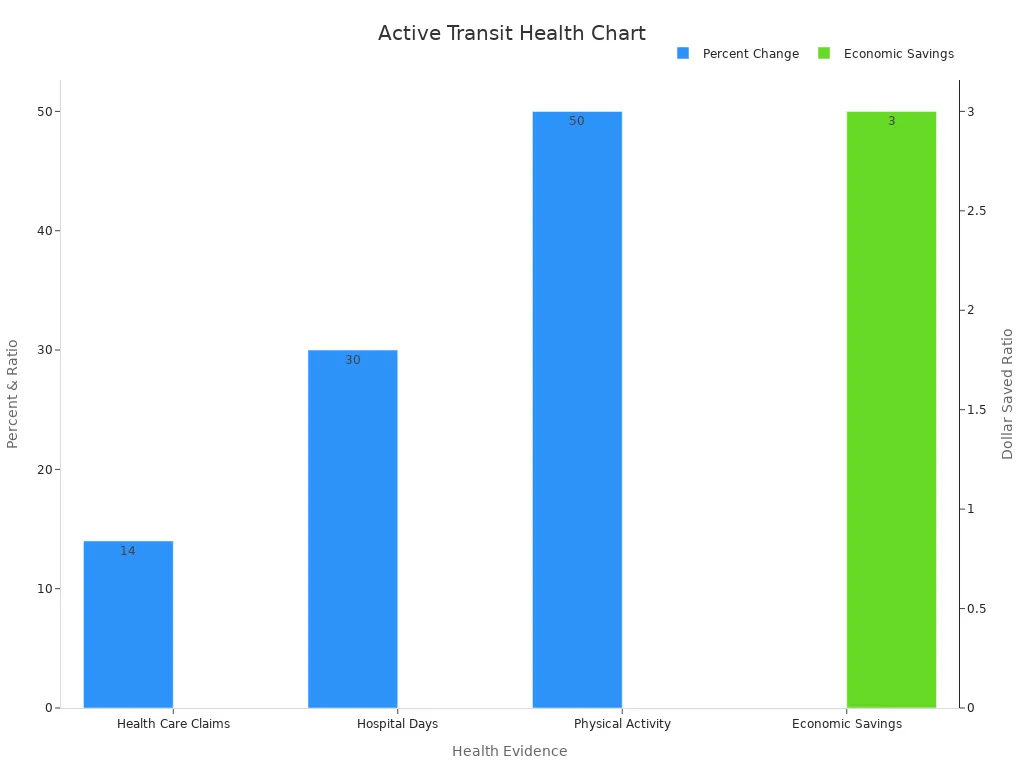
النقل النشط والكفاءة الحضرية
إن إضافة مسارات المشي وركوب الدراجات يجعل المدن تعمل بشكل أفضل. عدد أقل من السيارات يعني حركة مرور أقل وهواء أنظف. تربط الممرات وممرات الدراجات بين الأحياء, مما يجعل السفر سهلاً ونشطًا. وهذا يساعد الناس على البقاء في صحة جيدة ويحافظ على المدن خضراء وفعالة.
المشي وركوب الدراجات ليست مجرد اختيارات شخصية. إنهم يساعدون في بناء حياة أكثر صحة ومجتمعات أقوى. عن طريق اختيار السفر النشط, يمكنك أن تشعر بتحسن, وفر المال, ومساعدة الكوكب.
دور منتجات السلامة المرورية في الأنظمة متعددة الوسائط
الحفاظ على سلامة راكبي الدراجات باستخدام فواصل مسار الدراجة
تساعد منتجات السلامة المرورية مثل فواصل حارات الدراجات في جعل الشوارع أكثر أمانًا لسائقي الدراجات النارية. أنها تخلق مساحات واضحة بين الدراجات والسيارات, خفض مخاطر الحوادث. عندما تركب الدراجة, هذه الفواصل تبقي السيارات خارج المسار الخاص بك. وهذا يجعل ركوب الدراجات أكثر أمانًا وأكثر قابلية للتنبؤ بها.
تظهر الدراسات أن فواصل حارات الدراجات تعمل على تحسين السلامة. على سبيل المثال:
| نوع الأدلة | وصف |
|---|---|
| تقرير بحثي | تقرير NCHRP 1136 يوضح كيف تعزز ممرات الدراجات السلامة. |
| نظرة عامة على المشروع | مشروع NCHRP 15-74 يدرس ميزات تصميم حارة الدراجة. |
| تحليل الأعطال | يستعرض التقرير حوادث التصادم وميزات الطريق المرتبطة بممرات الدراجات. |
استخدام هذه الأدوات يشجع المزيد من الناس على ركوب الدراجة. وهذا يساعد على تقليل حركة المرور ويحافظ على نظافة الهواء.
أنظمة مرور أكثر ذكاءً لسفر أفضل
تساعد أنظمة المرور الذكية في إدارة الحافلات, الدراجات, والمشاة. تستخدم هذه الأنظمة أجهزة الاستشعار والذكاء الاصطناعي لتتبع حركة المرور وضبط الإشارات. عند التقاطعات المزدحمة, الأنظمة الذكية تقلل التأخير وتحسن السلامة.
تظهر دراسات المدينة كيف تعمل الأنظمة الذكية بشكل جيد:
| مصدر | شهادة |
|---|---|
| مدونة الحيوية | تقوم أجهزة الاستشعار بتتبع حركة المرور لتحسين التدفق. |
| مجلس مدينة نوتنغهام | لقد أدى الذكاء الاصطناعي إلى تحسين أوقات الحافلات وحركة المرور. |
| مجلس مقاطعة غرب ساسكس | أدت البيانات إلى برامج School Street أكثر أمانًا. |
تجعل هذه الأنظمة التبديل بين أوضاع السفر أسهل وأسرع.
مساعدة المركبات الكهربائية في محطات الشحن الذكية
دعم محطات الشحن الذكية المركبات الكهربائية (EVs) من خلال البقاء موثوقة. عندما تقود سيارة EV, أنت بحاجة إلى أجهزة شحن تعمل بشكل جيد ويسهل العثور عليها. التكنولوجيا الذكية, مثل eSIM, يبقي أجهزة الشحن متصلة وتعمل.
تشمل فوائد أجهزة الشحن الذكية:
- اتصالات أفضل لمحطات EV.
- إصلاح المشاكل قبل حدوثها.
- شبكات متنامية لعدد أكبر من مستخدمي المركبات الكهربائية.
هذه التحسينات تجعل استخدام المركبات الكهربائية أسهل. وهذا يساعد المزيد من الناس على اختيارهم, خفض التلوث وتحسين السفر في المدينة.
التحديات والحلول للنقل متعدد الوسائط
إصلاح مشاكل البنية التحتية والتمويل
يتطلب بناء أنظمة متعددة الوسائط بنية تحتية جيدة. تحتاج المدن إلى ممرات للدراجات, مسارات المشي, ومراكز النقل التي تتصل بشكل جيد. لكن العديد من المدن تعاني من المساحات الصغيرة والتكاليف المرتفعة. تؤدي هذه المشكلات إلى إبطاء التقدم وتجعل بناء الشبكات أكثر صعوبة.
يمكن للمدن حل هذه المشكلة من خلال اتخاذ خيارات ذكية. على سبيل المثال, تحويل ممرات السيارات إلى ممرات للدراجات أو الحافلات يوفر المساحة. ويمكن للشراكات بين القطاعين العام والخاص أن تساعد أيضًا في تمويل المشاريع. من خلال التعاون مع الشركات, يمكن للمدن تقاسم التكاليف وإنهاء المشاريع بشكل أسرع. المنح والبرامج الحكومية, مثل تلك من إدارة النقل الفيدرالية, إعطاء أموال إضافية لمشاريع السفر الخضراء.
تغيير عادات السفر والتفضيلات
إن إقناع الناس بتغيير طريقة سفرهم أمر صعب. يفضل الكثيرون السيارات لأنها تبدو أسهل أو أكثر موثوقية. غالبًا ما تمنع العادات الثقافية والاختيارات الشخصية الأشخاص من تجربة خيارات سفر جديدة.
تظهر الدراسات أن الاستراتيجيات يمكن أن تساعد الناس على التغيير. التنقل كخدمة (ماس) تجعل التطبيقات السفر أسهل من خلال الجمع بين التخطيط والمدفوعات في مكان واحد. تظهر الأبحاث تحسين ركوب الدراجات, المشي, وخيارات النقل يمكن أن تغير الآراء. كما تشجع الخصومات على بطاقات النقل والحملات التعليمية الأشخاص على تجربة طرق جديدة للسفر.
استخدام التكنولوجيا لاتصالات أفضل
تساعد التكنولوجيا في جعل الأنظمة متعددة الوسائط تعمل بشكل جيد. منتجات السلامة المرورية الذكية, تحديثات في الوقت الحقيقي, والتطبيقات تجعل السفر أسهل. These tools help you switch between biking, حافلات, and EV charging stations smoothly.
Cities use IoT sensors and AI to manage traffic and signals. This cuts delays and makes roads safer. Apps like Citymapper or Transit give live updates to plan faster routes. Payment systems that work across all modes make travel simple. One card or app can let you use buses, القطارات, and bikes easily.
By using smart infrastructure, behavior strategies, and tech tools, cities can solve problems and build connected travel systems.
Strategies for Promoting Multimodal Travel Adoption
Getting people to use multimodal travel needs smart strategies. Cities can take steps to make it easier and more popular.
- Supportive Policies and Incentives: Governments help by creating rules that connect travel options. ويمكنهم تقديم خصومات على تذاكر الحافلات أو برامج مشاركة الدراجات. تشجع هذه المدخرات الناس على تجربة طرق جديدة للسفر. إن إشراك الجمهور في القرارات يبني الثقة ويضمن تلبية احتياجات الجميع.
- حملات التوعية العامة: إن تعليم الناس حول فوائد السفر متعدد الوسائط يمكن أن يغير العادات. إعلانات تظهر رحلات أسرع, توفير المال, ويمكن للمدن النظيفة أن تلهم الركاب. على سبيل المثال, إن شرح كيفية تقليل تلوث الهواء والضوضاء يمكن أن يجذب المسافرين الصديقين للبيئة.
- الاستثمار في التكنولوجيا والابتكار: الأدوات الجديدة تجعل السفر متعدد الوسائط بسيطًا وحديثًا. التطبيقات التي تظهر الطرق, تحديثات حية, وخيارات الدفع تساعد المسافرين. قواعد مرنة للتكنولوجيا الجديدة, مثل السيارات ذاتية القيادة أو الدراجات البخارية الإلكترونية, إبقاء المدن جاهزة للمستقبل.
- التعاون بين القطاعات: العمل الجماعي بين الحكومات, الشركات, والمجتمعات تثير أفكارًا جديدة. يمكن للشراكات تمويل مشاريع مثل مسارات الدراجات أو أجهزة شحن المركبات الكهربائية. العمل معًا يخلق أهدافًا مشتركة لوسائل نقل صديقة للبيئة.
باستخدام هذه الاستراتيجيات, يمكن للمدن أن تجعل السفر متعدد الوسائط سهلاً وجذابًا. تعمل هذه التغييرات على تحسين كيفية تحرك الناس وجعل المدن أكثر نظافة وكفاءة.
الاتجاهات المستقبلية في النقل متعدد الوسائط
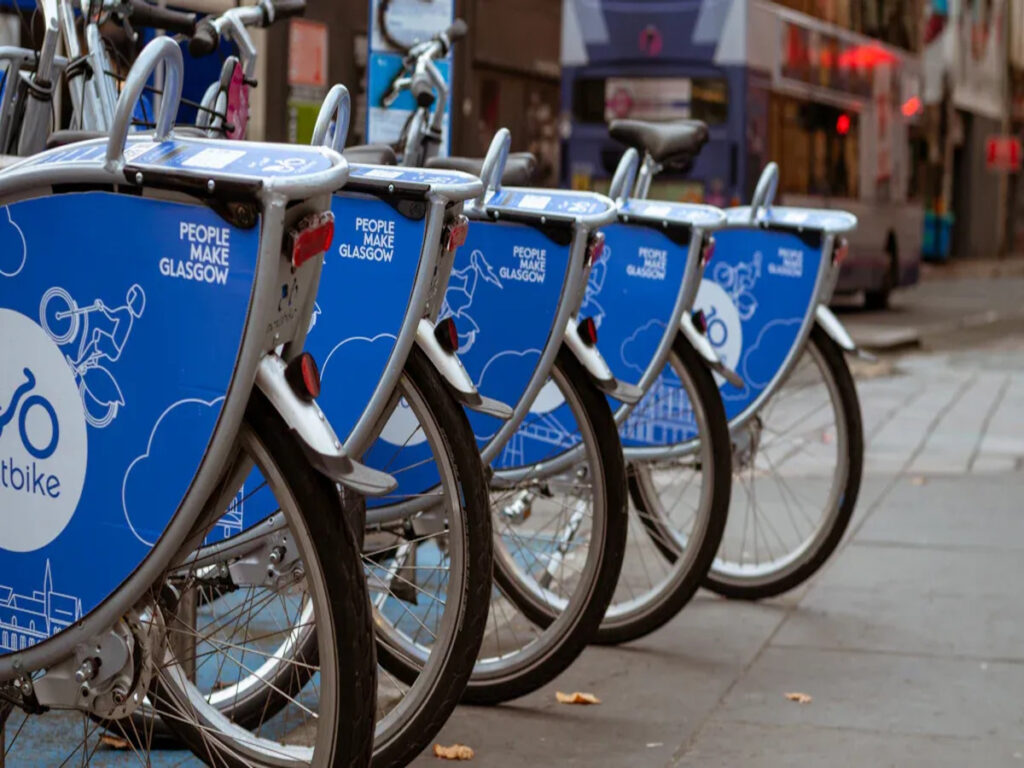
كيف تغير التكنولوجيا الأنظمة المتعددة الوسائط
التكنولوجيا تجعل وسائل النقل أكثر ذكاءً وأسهل في الاستخدام. تستخدم المدن الآن أدوات مثل الذكاء الاصطناعي, أجهزة الاستشعار, والبيانات الحية لربط خيارات السفر. على سبيل المثال, يمكن للذكاء الاصطناعي اكتشاف المشكلات مبكرًا لتجنب التأخير. تقوم الأنظمة الذكية أيضًا بتغيير مسارات الحافلات والقطارات بناءً على حركة المرور, مساعدة الناس على الوصول إلى الأماكن بشكل أسرع.
أفكار جديدة مثل السيارات ذاتية القيادة و التنقل كخدمة (ماس) تتغير طريقة سفرنا. بواسطة 2027, زيادة 1.2 سيستخدم مليار شخص تطبيقات MaaS للتخطيط للرحلات ودفع ثمنها. أصبحت الطاقة الخضراء أيضًا جزءًا من السفر داخل المدينة. بواسطة 2030, وستعمل نصف أنظمة النقل في المدن الكبرى على الطاقة المتجددة, خفض التلوث ومساعدة الكوكب.
| التكنولوجيا/الاتجاه | التنبؤات المستقبلية |
|---|---|
| سيارات ذاتية القيادة | قد تنخفض تكاليف السفر 40-50% بواسطة 2030. |
| المركبات الكهربائية والهيدروجينية | بواسطة 2030, 30-40% من المركبات ستكون كهربائية أو تعمل بالهيدروجين. |
| أنظمة المدن الذكية | يمكن أن تنخفض الاختناقات المرورية بنسبة 20-30% في المدن الذكية بواسطة 2030. |
| التنقل كخدمة (ماس) | زيادة 1.2 سيستخدم مليار شخص تطبيقات MaaS بحلول 2027. |
كما تزداد شعبية المركبات الصغيرة مثل الدراجات البخارية الإلكترونية والدراجات المشتركة. في 2022, شهدت أمريكا الشمالية 157 مليون رحلة باستخدام هذه الخيارات. عن 64% من هذه الرحلات متصلة بالحافلات أو القطارات, حل مشكلة الوصول من وإلى المحطات.
سياسات جديدة للنقل الأخضر
تساعد القواعد والسياسات المدن على إنشاء أنظمة سفر صديقة للبيئة. تقدم العديد من المدن الآن إعفاءات ضريبية للسيارات الكهربائية وأموالاً للأبحاث الخضراء. كما أن بناء ممرات الدراجات ومحطات الشحن بمنتجات السلامة المرورية يسهل أيضًا استخدام خيارات السفر النظيفة.
التخطيط الحضري يساعد أيضا. برشلونة Superblocks إعطاء مساحة أكبر للمشاة ومساحة أقل للسيارات, الحد من التلوث وجمع الناس معا. حافلات النقل السريع في كوريتيبا (حافلات النقل السريع) نظام سريع مثل القطار ولكنه أرخص, إلهام مدن أخرى لتقليدها. توضح هذه الأفكار كيف يمكن للقواعد الذكية أن تجعل السفر أفضل للجميع.
| مثال السياسة | ماذا تفعل | نتائج |
|---|---|---|
| نظام الحافلات السريعة في كوريتيبا | يجمع بين سرعة القطار والقدرة على تحمل تكاليف الحافلة. | يقلل وقت السفر والتلوث, منقول بواسطة 50+ المدن. |
| برشلونة Superblocks | يعطي مساحة أكبر للمشاة وراكبي الدراجات. | هواء أنظف ومجتمعات أقوى. |
| مترو ميديلين | يستخدم التلفريك لربط مناطق التلال بالمدينة. | وصول أفضل إلى الوظائف وحركة مرور أقل. |
المدن الرائدة في السفر متعدد الوسائط
تظهر بعض المدن كيفية جعل الأنظمة متعددة الوسائط تعمل بشكل جيد. يوجد في هلسنكي تطبيق MaaS الذي يجمع بين الحافلات, الدراجات, ومشاركة الركوب في أداة واحدة سهلة. تستخدم سنغافورة نظام تحديد المواقع العالمي (GPS) وأجهزة الاستشعار للحفاظ على مواعيد الحافلات والقطارات.
في ميديلين, كولومبيا, تربط عربات التلفريك الأحياء البعيدة بوسط المدينة, مساعدة الناس على الوصول إلى العمل والمدرسة. تجعل المباني الفائقة في برشلونة الشوارع أكثر أمانًا للمشاة وسائقي الدراجات النارية, خلق أحياء حيوية. توضح هذه المدن كيف يمكن أن يؤدي الجمع بين خيارات السفر إلى تقليل حركة المرور, تحسين الوصول, وحماية البيئة.
- يساعد الذكاء الاصطناعي في وقف التأخير عن طريق إصلاح المشكلات مبكرًا.
- تقوم الأنظمة الذكية بتغيير المسارات بناءً على تحديثات حركة المرور المباشرة.
- تقترح أدوات البيانات أفضل خيارات السفر لكل شخص.
مع التكنولوجيا الجديدة مثل التطبيقات وأجهزة الاستشعار, المدن تجعل السفر أكثر سلاسة. هذه التغييرات تشكل مستقبل النقل, جعل المدن أكثر نظافة وأكثر اتصالاً.
الدور المتنامي للكهرباء والتنقل المشترك
| النقاط الرئيسية | وصف |
|---|---|
| التبديل إلى المركبات الكهربائية | تستخدم الخدمات المشتركة المركبات الكهربائية لخفض التلوث. |
| الدعم الحكومي | تساعد الإعفاءات الضريبية والأموال على زيادة اعتماد السيارات الكهربائية. |
| عوامل نمو السوق | نمو المدينة والتكنولوجيا يعززان التنقل المشترك. |
تركز شركات السيارات الآن على إنتاج المزيد من السيارات الكهربائية بدلاً من سيارات الغاز. وهذا يتوافق مع الحاجة المتزايدة لخيارات السفر الخضراء. باستخدام خدمات EV المشتركة, أنت تساعد في إنشاء مدن أنظف وعالم أكثر صحة.
التنقل المشترك هو أكثر من مجرد سفر سهل. إنها خطوة نحو مستقبل أنظف. سواء كنت تركب سكوترًا إلكترونيًا أو تشارك سيارة كهربائية, أنت تساعد الكوكب وتدعم الابتكار.
يعمل النقل متعدد الوسائط على تغيير كيفية سفر الأشخاص في المدن. فهو يساعد على تقليل استخدام السيارة ويجعل التنقل أسهل. في المدن, يتم استخدام النقل العام أكثر بكثير مما هو عليه في المناطق الريفية. على سبيل المثال, يستخدم الناس في المدن الألمانية وسائل النقل العام أكثر بخمس مرات من سكان الريف. منتجات السلامة المرورية مثل فواصل حارات الدراجات تجعل السفر أكثر أمانًا وأفضل تنظيمًا. بناء البنية التحتية الذكية والعمل معًا يمكن أن يؤدي إلى نظافة, مدن أكثر اتصالاً. يمكن أن يساعد اختيار السفر متعدد الوسائط في بناء مستقبل أكثر خضرة واستدامة.
أوبترافيك هو في طليعة هذا التحول, توفير حلول مبتكرة للسلامة المرورية هذا الدعم النقل متعدد الوسائط. ملكنا فواصل ممرات الدراجة المتينة, أنظمة إدارة المرور الذكية, و الأقماع المرورية تم تصميمها لتحسين تدفق حركة المرور, تعزيز السلامة, وضمان التكامل السلس بين وسائل النقل المختلفة. مع منتجات السلامة المرورية, OPTRAFFIC تساعد المدن على الإبداع متصل, البنية التحتية المستدامة التي تمكن آمنة, فعال, والسفر الصديق للبيئة للجميع.
استكشف منتجات السلامة المرورية من OPTRAFFIC اليوم وشاهد كيف يمكننا مساعدة مدينتك على البناء بشكل أكثر ذكاءً, أكثر أمانًا, والبنية التحتية الأكثر خضرة. اتصل بنا الآن لمزيد من المعلومات أو لطلب عرض أسعار لمشروعك القادم.
التعليمات
ما هو النقل المتعدد الوسائط?
يستخدم النقل متعدد الوسائط طرقًا مختلفة للسفر, مثل ركوب الدراجات, المشي, والحافلات. يتيح لك اختيار أفضل طريقة لكل جزء من رحلتك. وهذا يجعل السفر أسهل وأفضل للبيئة.
كيف يفيد التنقل متعدد الوسائط المدن؟?
يساعد التنقل متعدد الوسائط المدن عن طريق تقليل حركة المرور والتلوث. كما أنه يجعل التنقل أسهل وأكثر أمانًا. باستخدام الحافلات, الدراجات, ومسارات المشي تخلق مدنًا أنظف وأكثر ترابطًا.
ما هو الدور الذي تلعبه التكنولوجيا في الأنظمة متعددة الوسائط؟?
التكنولوجيا تجعل السفر متعدد الوسائط بسيطًا وذكيًا. تساعد التطبيقات وأجهزة الاستشعار في التخطيط للرحلات وتجنب التأخير. كما أنها تجعل التبديل بين خيارات السفر سريعًا وسهلاً.
لماذا تعتبر فواصل حارات الدراجات مهمة؟?
تعمل فواصل حارات الدراجات على حماية سائقي الدراجات النارية عن طريق إبعادهم عن السيارات. إنها تقلل من فرصة وقوع الحوادث وتشجع المزيد من الناس على ركوب الدراجة. وهذا يساعد على تقليل حركة المرور والتلوث في المدن.
كيف يمكنك دعم النقل متعدد الوسائط في مجتمعك؟?
يمكنك المساعدة عن طريق المشي, ركوب الدراجات, أو استخدام وسائل النقل العام في كثير من الأحيان. إن المطالبة بممرات وأرصفة أفضل للدراجات تساعد أيضًا في جعل مدينتك أكثر خضرة وأسهل للسفر إليها.

